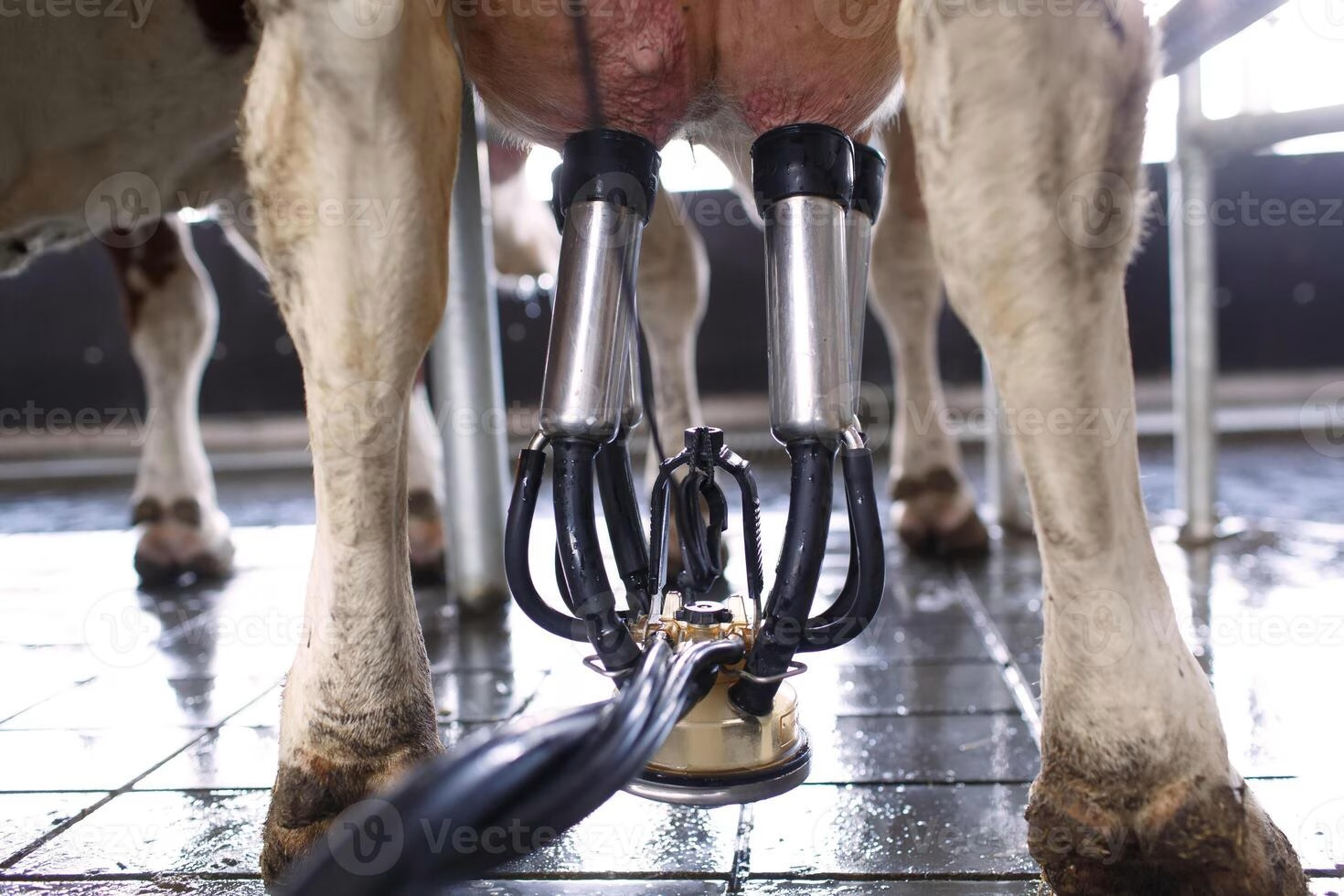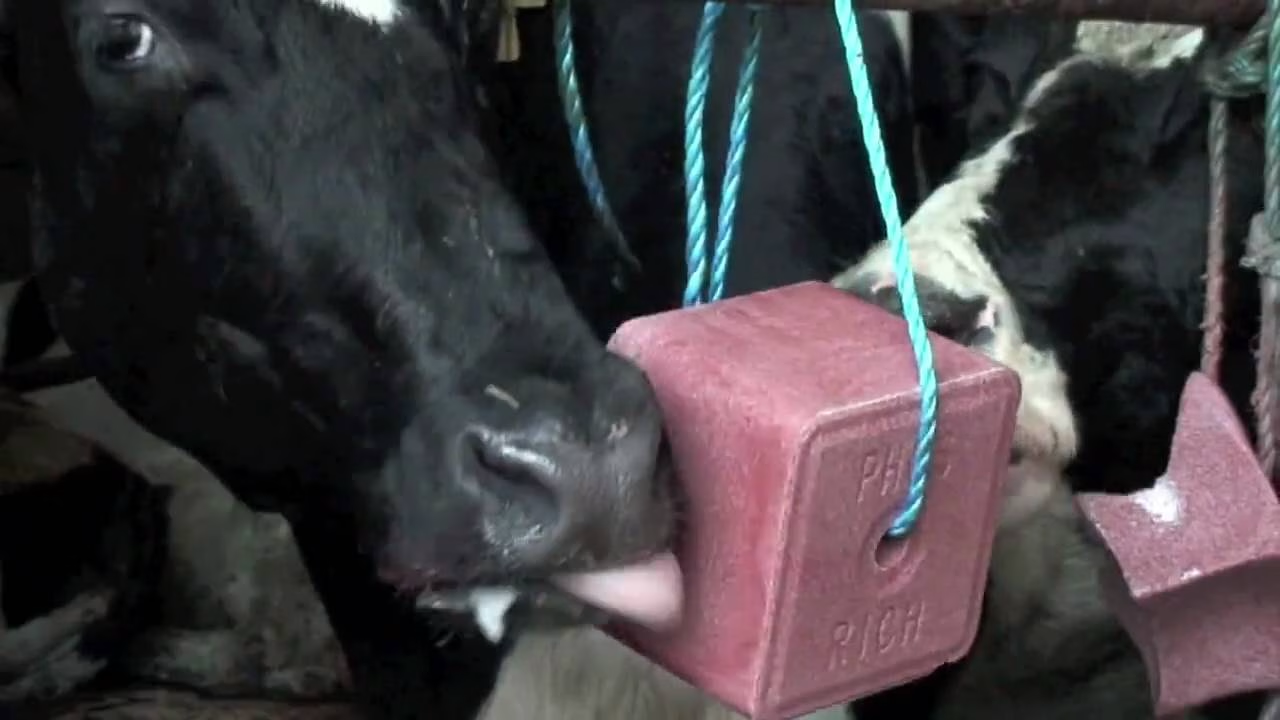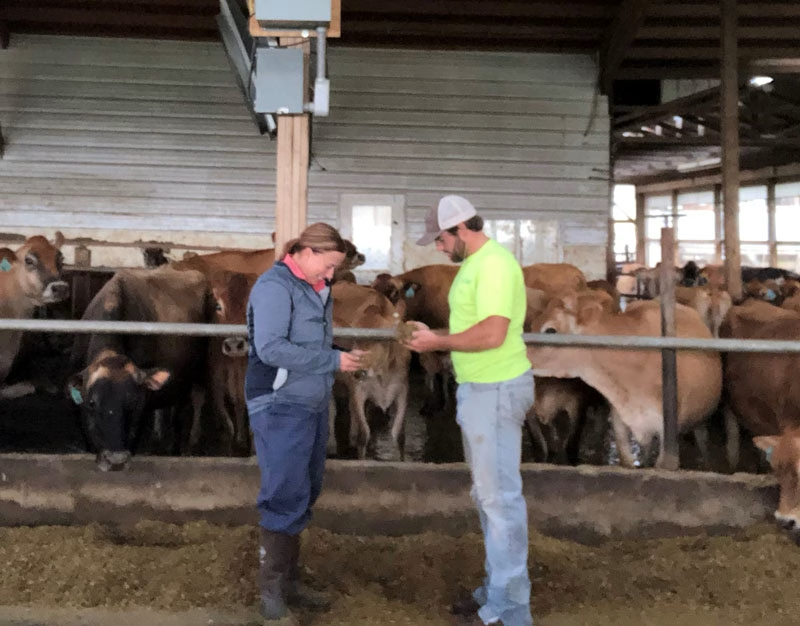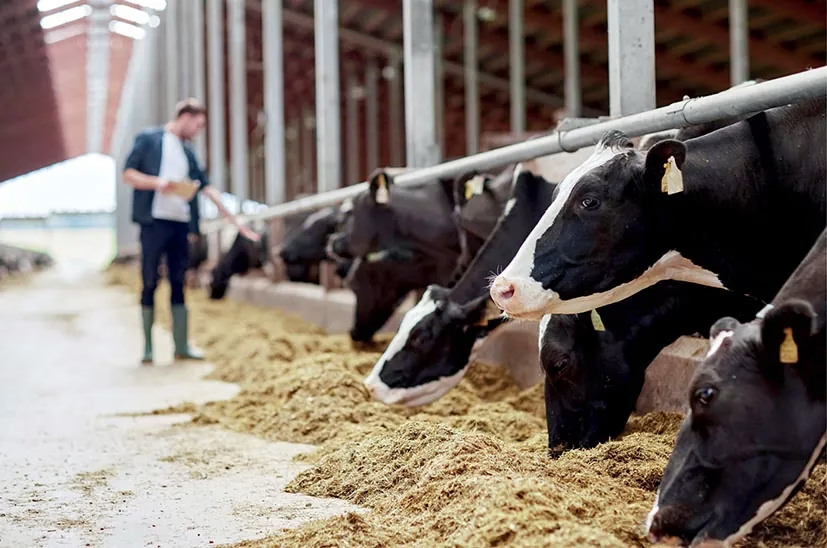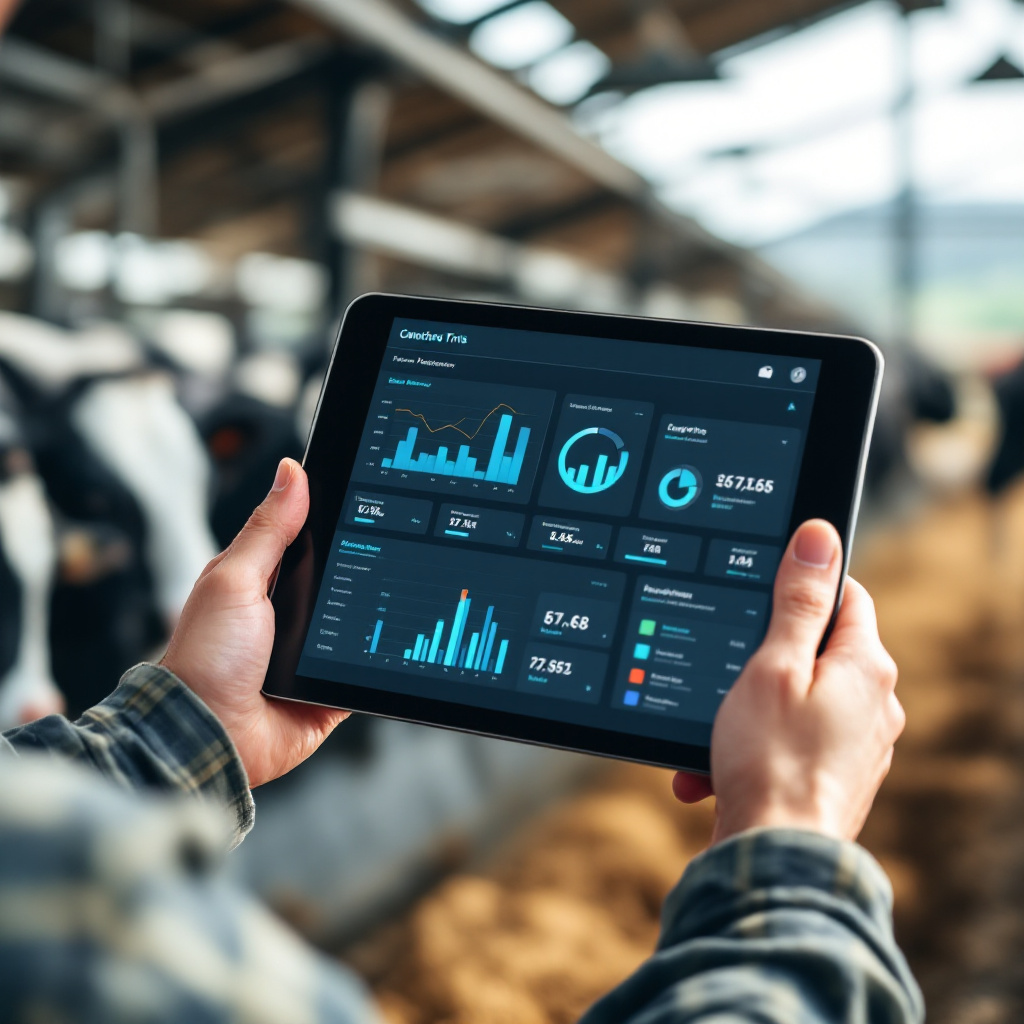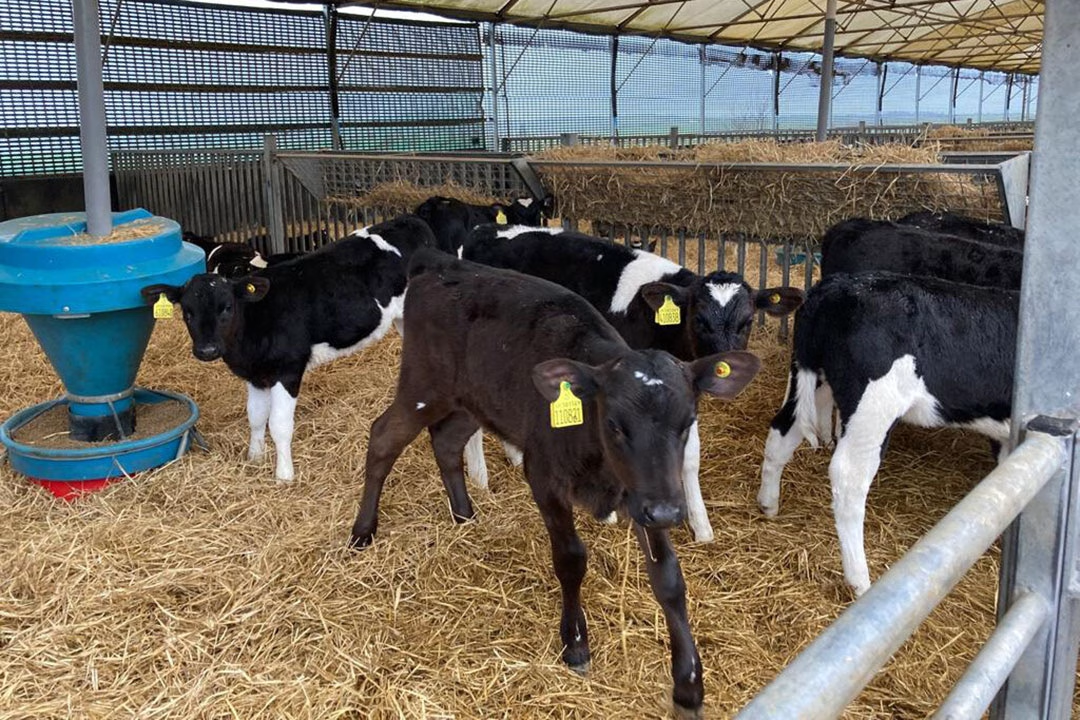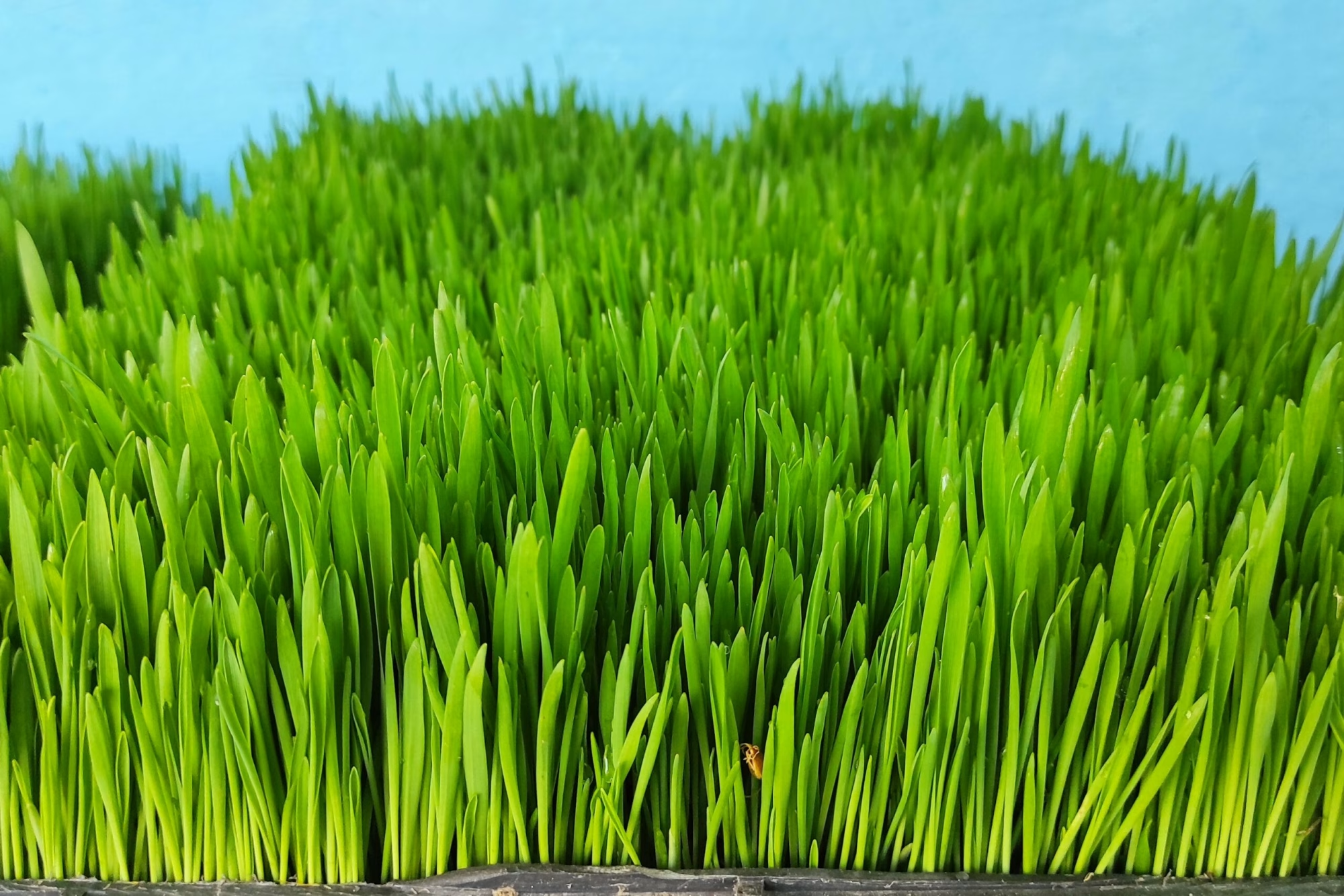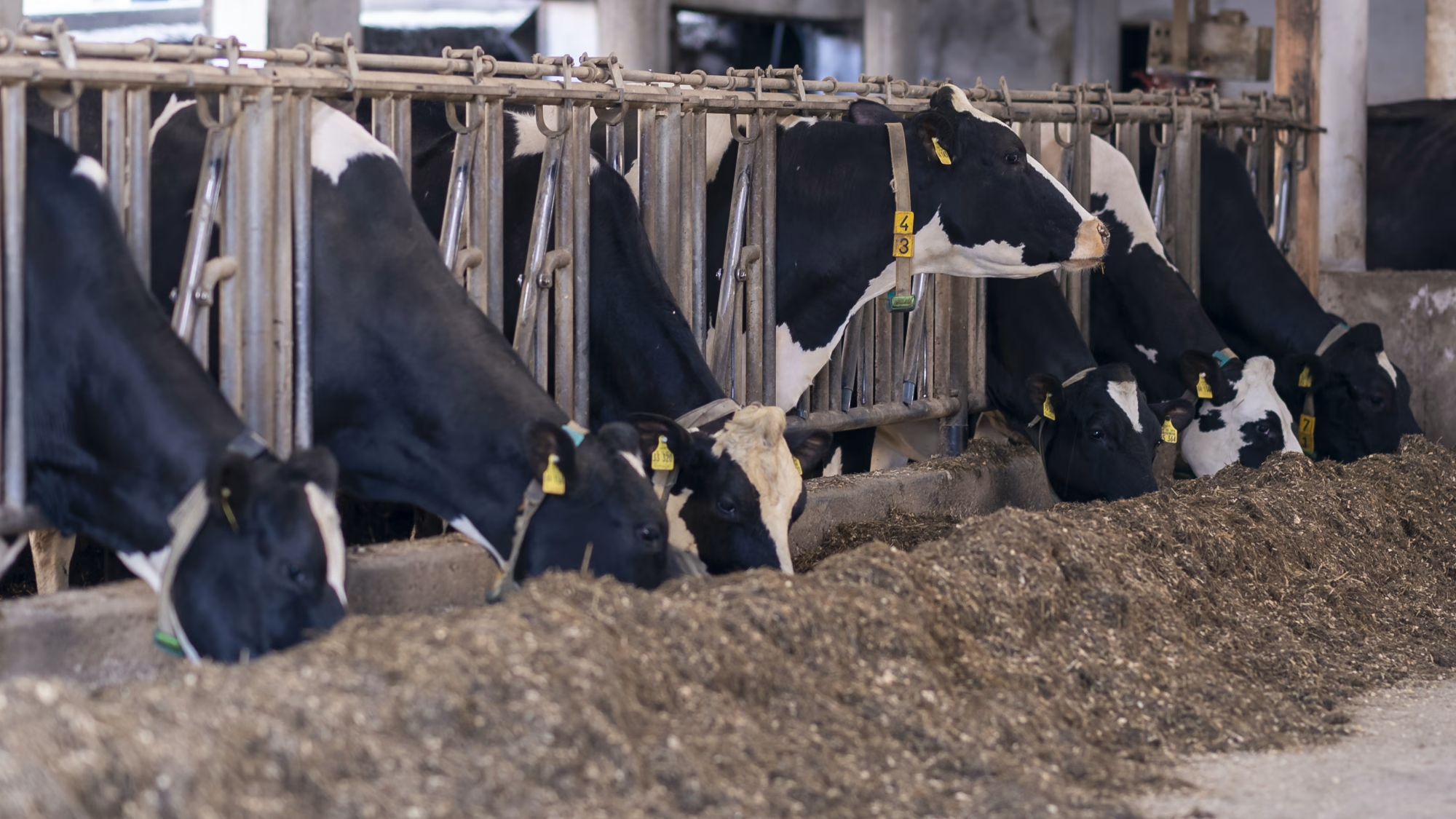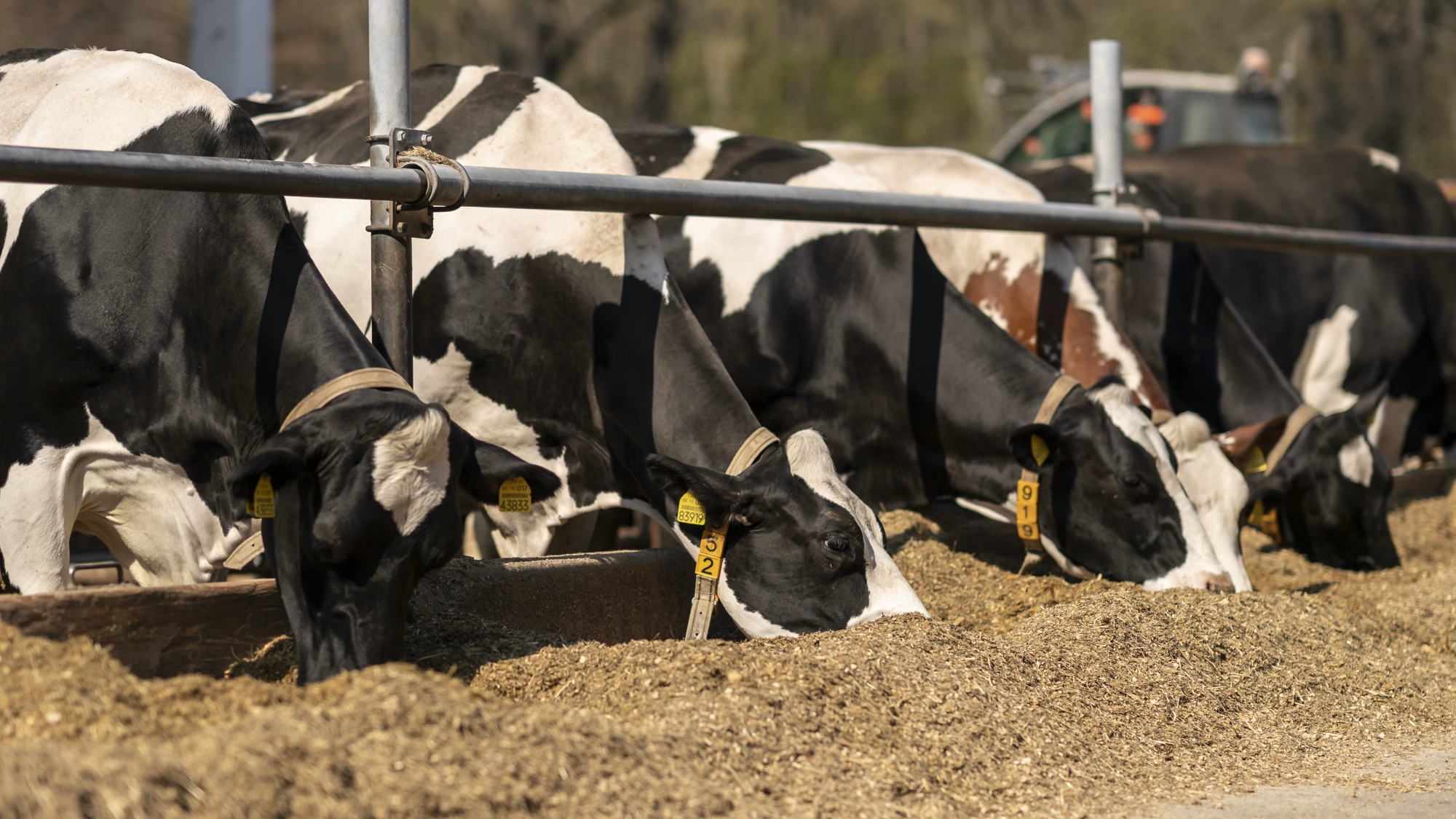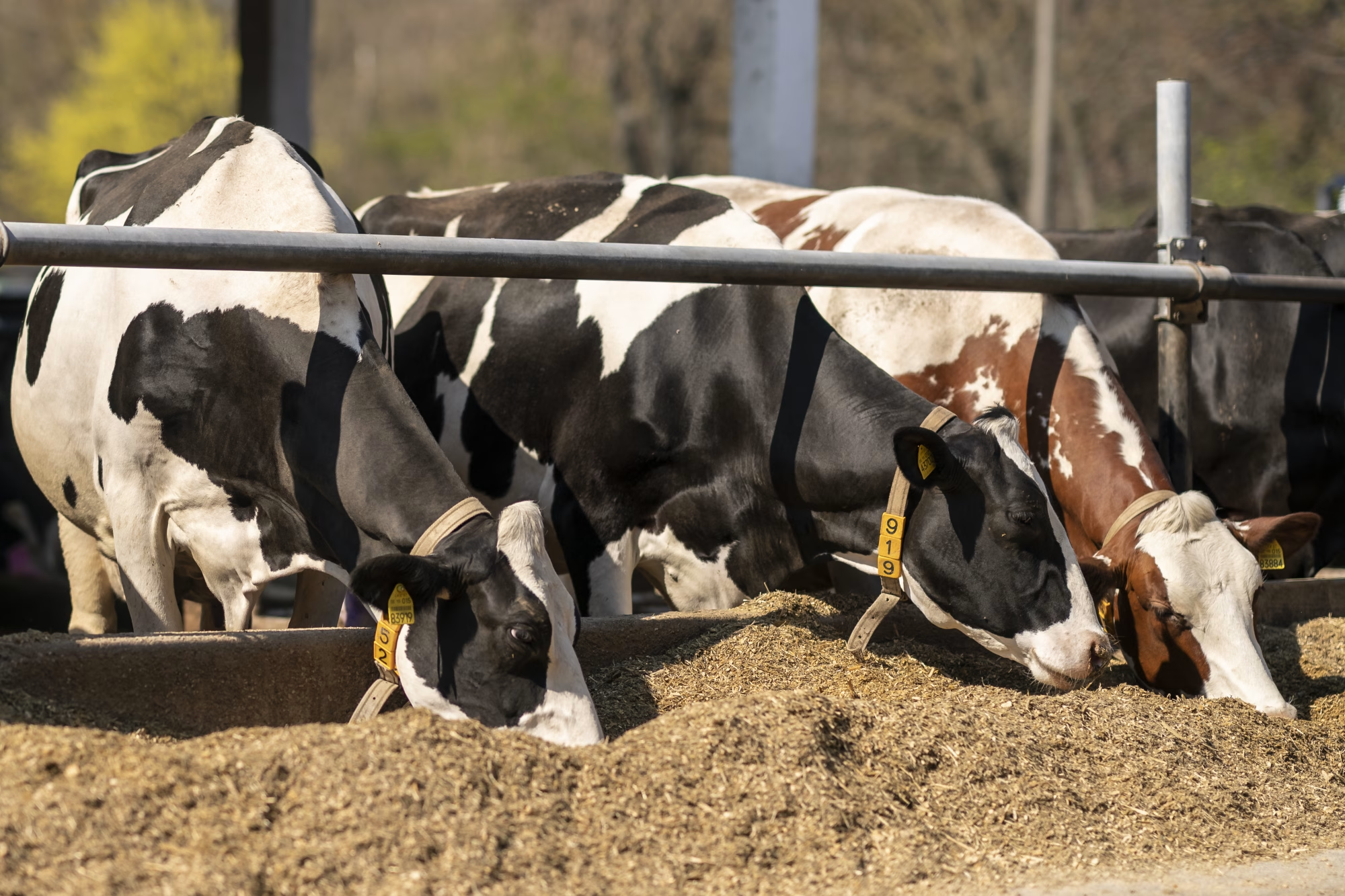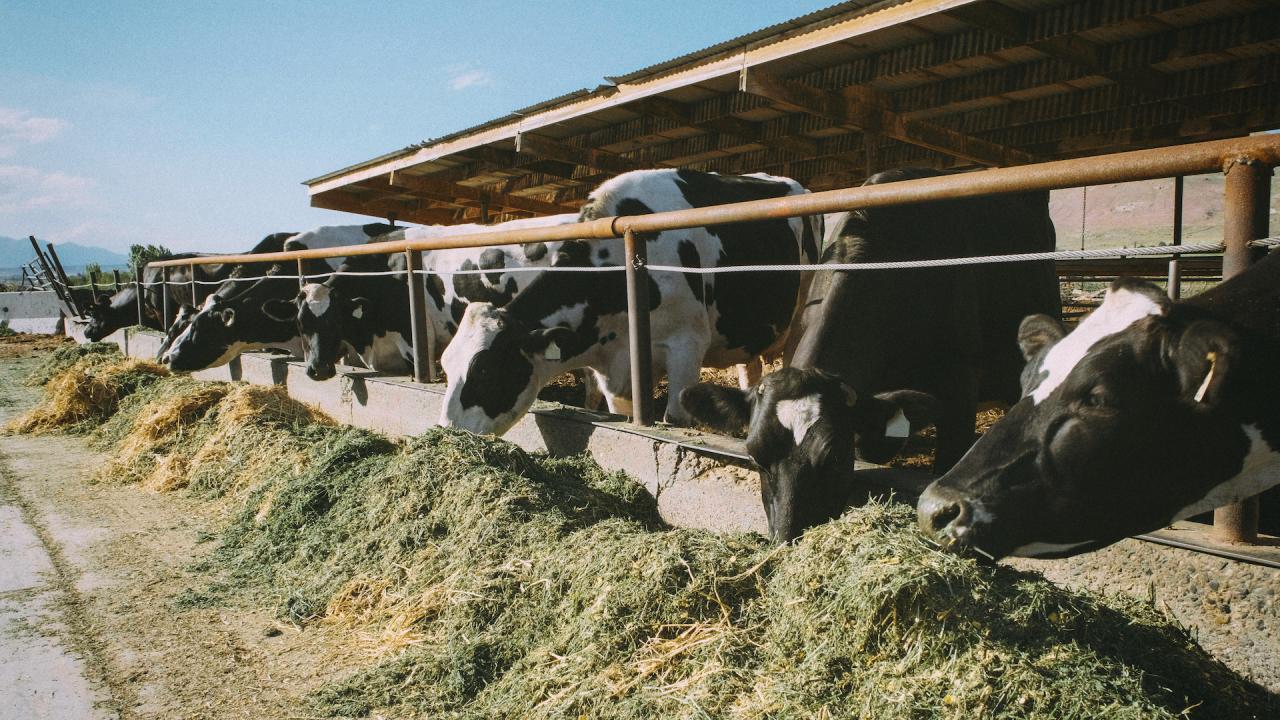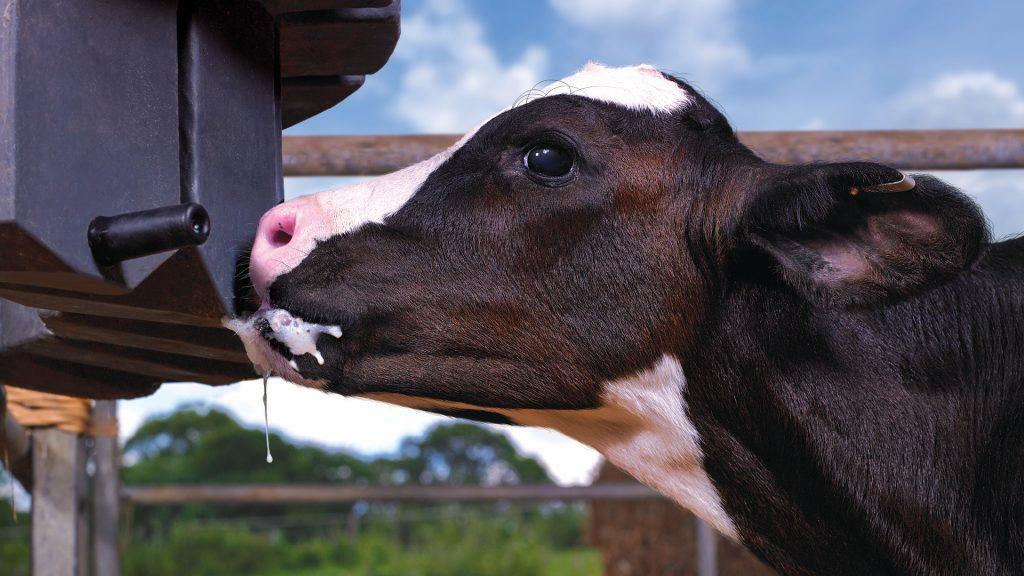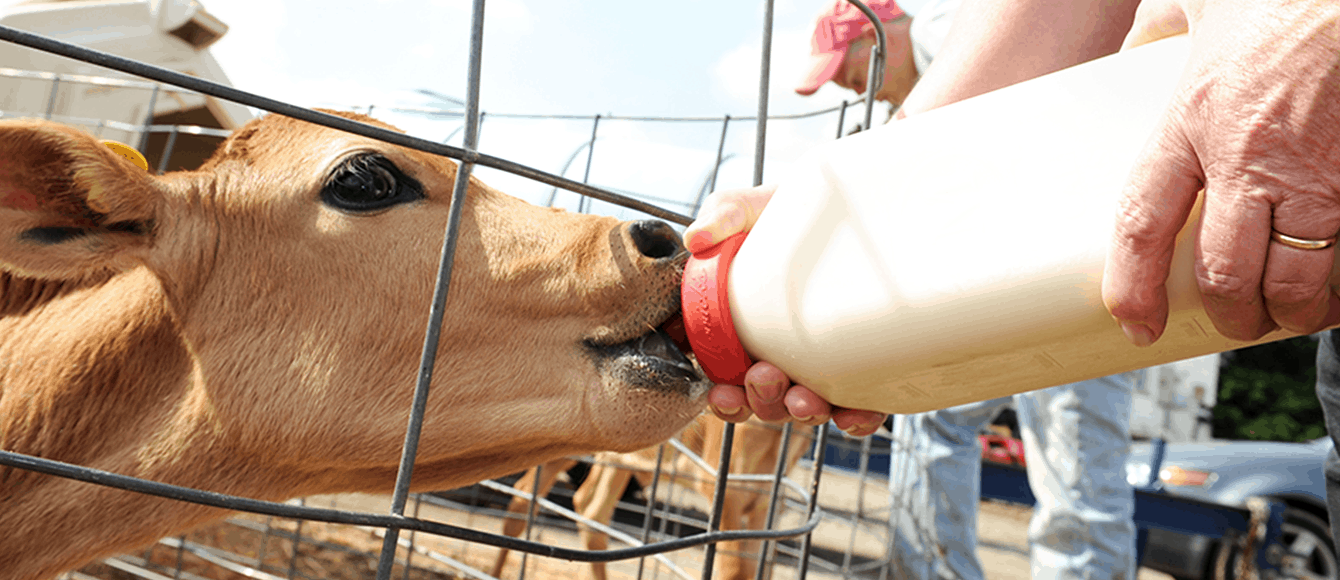Is heat stress draining your dairy profits? Discover how strategic buffer solutions are helping producers combat this challenge while improving animal welfare. Your competitors are already implementing this science—are you?
While you are watching your feed costs and milk prices, a silent profit killer lurks in your cows’ rumens, potentially costing your operation significant revenue over time; heat stress is not just making your cows pant—it is decimating your bottom line by crashing rumen pH and setting off a cascade of metabolic disasters that your competitors have already figured out how to mitigate. The solution? It is not expensive robots or fancy genetics—it is a strategic approach to buffer supplementation that could significantly improve your operation’s performance during challenging heat conditions. Still skeptical? Then, you are about to discover why the dairy down the road might be outperforming you during every summer slump.
Your Herd’s Hidden Brewery: Where Profit Ferments or Fails
Let us discuss what is happening inside your cows when temperatures climb. Their rumens are not just digestive organs—they are sophisticated fermentation systems that house trillions of microorganisms converting feed into energy. This biological brewery generates volatile fatty acids (VFAs), providing 70-80% of a dairy cow’s energy requirements. However, one wrong move and this productive brewery turns into a metabolic dumpster fire.
“A cow’s rumen is like a brewery—too much acid and the entire operation shuts down. Buffers? They are the bouncers keeping the microbial mosh pit in check.” — Dr. Mark Johnson, UW Dairy Science.
For optimal performance, rumen pH must stay between 6.2 and 6.8—the sweet spot where fiber-digesting bacteria thrive. When pH drops below 5.8 for extended periods, your cows develop subacute ruminal acidosis (SARA), silently sabotaging feed efficiency and profitability.
Your cow’s rumen is not just fermenting feed—it is maintaining a delicate ecosystem where over 200 microbial species compete for resources. When acid-loving bacteria dominate during pH crashes, they not only change digestion but trigger systemic inflammation that compromises everything from hoof health to reproductive performance.
The Triple Threat of Heat Stress
When the Temperature-Humidity Index (THI) exceeds 68, your cows are not just uncomfortable—they are fighting a biochemical war on three fronts:
- Saliva Shutdown: Heat stress slashes saliva production up to 40%, dramatically reducing the cow’s natural buffering capacity.
- Respiratory Bicarbonate Loss: Those heaving sides are not just dramatic—your cows are hemorrhaging bicarbonate with every pant, depleting their pH defense system.
- Feed Behavior Sabotage: Heat-stressed cattle consume less forage and more concentrates, creating a perfect storm for acidosis. Research shows feed intake typically drops by 8-12% or more during heat stress, altering rumen composition and reducing milk production.
USDA research shows climate change-induced heat stress could lower U.S. milk production by 0.6-1.3 percent by 2030. The financial damage is substantial, as the dairy sector bears over half of the costs of current heat stress to the livestock industry.
The Buffer Arsenal: Weapons for Your Profit War
Not all buffers are created equal. The difference between mediocre and masterful buffer strategies can mean thousands in your pocket—or someone else’s.
Sodium Bicarbonate: Your Front-Line Defense
This is not just your grandmother’s baking soda. Sodium bicarbonate (NaHCO₃) accounts for approximately 65% of global buffer usage in dairy nutrition, according to Dairy Global (2024). Upon entering the rumen, it rapidly dissociates into sodium and bicarbonate ions, neutralizing excess hydrogen ions and stabilizing pH.
When properly implemented, sodium bicarbonate supplementation increases acetate production by 12% and boosts milk fat percentage by 0.14% on average, as demonstrated in research by Harrison et al. (2024). What is the recommended inclusion rate? Between 0.8% and 1.2% of dietary dry matter—push beyond 1.5%, and you risk sodium overload.
Potassium Carbonate: Your Heat Stress Secret Weapon
While your competitors struggle through summer, savvy producers are deploying potassium carbonate (K₂CO₃) as a buffer and crucial electrolyte replacement. According to USDA-ARS research (2024), heat-stressed cattle can lose up to 59% of their potassium reserves through altered perspiration and urination patterns.
Herds supplemented with K₂CO₃ during periods when THI exceeds 72 show remarkable resilience, as documented by Zhang et al. (2024):
- 30% reduction in respiration rates
- 0.3% increase in milk fat percentage
- Improved dry matter intake during heat waves
Calcium and Magnesium Compounds: Your Supporting Cast
While less prominent than sodium and potassium buffers, calcium carbonate (CaCO₃) and magnesium oxide (MgO) play valuable supporting roles:
- Calcium carbonate: Provides moderate buffering above pH 6.0 while supporting calcium requirements
- Magnesium oxide: Functions as both a buffer and ruminal modifier, though inclusion should be limited to 0.4% of dietary dry matter to prevent adverse impacts on fiber digestion, as shown by Mertens (2024)
| Buffer Type | Optimal Inclusion Rate | Primary Benefits | Best Application |
| Sodium Bicarbonate | 0.8–1.2% DM | Rapid pH stabilization, 12% more acetate, 0.14% milk fat increase | High-concentrate diets, everyday use |
| Potassium Carbonate | 0.5–0.7% DM | Electrolyte replacement, 30% reduced respiration rates, 0.3% milk fat increase | Summer heat stress (THI > 72) |
| Magnesium Oxide | 0.2–0.4% DM | Ruminal modifier, supports magnesium requirements | Limit to 0.4% DM to avoid negative impacts |
| Sodium Sesquicarbonate | 0.25–0.50% DM | Combines bicarbonate + carbonate benefits | Alternative to sodium bicarbonate |
| Biochar (Organic) | ~0.15 lbs/cow/day | 18% increase in butyrate production | Budget-conscious or organic operations |
DCAD: The Electrolyte Equation That Enhances Profitability
The real pros are not just throwing buffers at the problem—they are strategically manipulating Dietary Cation-Anion Difference (DCAD) to maximize returns. This is not just scientific jargon but a formula that top producers are already exploiting.
“It is like asking the cow to run a marathon while breathing through a straw. DCAD management? That is the oxygen mask.” — Luiz Fernandez, Brazilian Dairy Consultant
The DCAD equation—(Na⁺ + K⁺) − (Cl⁻ + S²⁻)—provides the framework for electrolyte management during heat challenges. Research shows that increasing DCAD from standard levels (+250 mEq/kg DM) to elevated levels (+400 mEq/kg DM) during heat stress can produce substantial performance benefits:
- Dry matter intake increases
- Milk yield improvements
- Reduced inflammation markers
The industry’s obsession with genetic solutions has sometimes overshadowed metabolic management as an important profit lever. While your neighbor spends on genetic improvements yielding modest milk gains, you could invest in buffer strategies that could potentially deliver more significant production increases during heat stress periods.
| THI Range | Physiological Response | Production Impact | Recommended Buffer Strategy |
| 65-68 | Initial panting, slight DMI decrease | Milk yield drops beginning at 2.2 kg/day | Basic sodium bicarbonate (0.8% DM) |
| 68-72 | Respiratory rate 60-80/min, reduced rumination | 5-12% milk yield reduction | Add potassium carbonate (0.5% DM) |
| 72-78 | Respiratory rate 80-120/min, 25% saliva reduction | 10-25% milk yield reduction, 0.2-0.4% milk fat depression | Full buffer protocol with DCAD +350-400 mEq/kg DM |
| >78 | Severe panting (>120/min), 40% saliva reduction | >25% milk yield reduction, possible mortality | Maximum buffer rates + cooling interventions |
Show Me the Money: The Economic Benefits of Buffer Strategies
Let us cut through the science and get to what matters—your bottom line. The financial case for strategic buffer implementation is compelling.
The Buffer Math Your Banker Will Love
| Herd Size | Daily Buffer Cost | Potential Production Benefits | Possible Daily Returns |
| 100 cows | $48 | Improved production and components | Significant ROI during heat stress periods |
| 500 cows | $240 | Enhanced milk output and health | Multiplied returns with scale |
| 1,000 cows | $480 | Reduced heat stress impacts across herd | Substantial operation-wide benefits |
Buffer skeptics argue that implementation costs are prohibitive for smaller operations. However, even smaller dairies can see meaningful returns—potentially enough to cover buffer expenses in a relatively short period during heat stress conditions.
“Buffers stabilize rumen health and optimize microbial growth.” — Dr. Michael Hutjens, Professor Emeritus, University of Illinois
Most dairy interventions deliver single-digit ROI percentages. Facility improvements? 3-8%. Genetic selections? 5-12%. Advanced reproduction protocols? 10-18%. Compare that to buffer strategies that can deliver significant returns during heat stress, and the question becomes not whether you can afford to implement them but whether you can afford not to.
| Farm Scenario | Daily Buffer Investment | Potential Returns | Possible Benefits |
| 100-cow herd during moderate heat stress (THI 70-75) | $48/day ($0.48/cow) | Improved milk production and components | Potentially significant ROI |
| 100-cow herd during severe heat stress (THI >78) | $72/day ($0.72/cow) | Enhanced production and reduced vet costs | Even greater potential returns |
| 500-cow organic dairy using alternative buffers | $112/day ($0.22/cow) | Production improvements with organic premium | Appealing economics for specialty markets |
| Year-round buffer program (seasonal adjustments) | Varies by season and herd size | Consistent year-round benefits | Long-term operational improvements |
It is like giving the cows antacids and Gatorade in one, where implementing a potassium carbonate-focused buffer strategy during extreme heat (THI 78) can transform your operation:
| Metric | Before Implementation | After Implementation |
| Dry Matter Intake | 22.4 kg/day | 26.6 kg/day |
| Milk Fat Percentage | 3.5% | 3.9% |
| Monthly Veterinary Costs | $8,200 | $6,724 |
These results demonstrate benefits extending beyond milk production to herd health and reduced veterinary expenses. That is not just profit enhancement—it is comprehensive business improvement.
Implementation Without Headaches: Your Action Plan
Forget complex theories. Your straightforward buffer battle plan works even when labor and margins are tighter.
Step 1: Mix Buffers Like a Profit-Maximizing Chef
For maximum returns during heat stress, blend:
- Sodium bicarbonate: 0.8–1.2% DM (approximately 1.6–2.4 lbs per cow daily)
- Potassium carbonate: 0.5–0.7% DM (approximately 1–1.4 kg per cow daily)
This combination provides rapid pH stabilization from sodium bicarbonate while addressing electrolyte losses through potassium carbonate.
“It is like giving the cows antacids and Gatorade in one.” — Jake Thompson, Herd Manager, Sunshine State Farms.
Step 2: Leverage Forage for Maximum Effect
Buffer effectiveness significantly increases when paired with adequate, physically effective fiber. Target forage with ≥30% NDF to promote chewing activity and natural saliva production. This approach is confirmed by research showing that high-quality forage reduces the adverse effects of heat stress by requiring less intake to maintain a balanced ratio while never reducing fiber levels below 18%.
Step 3: Monitor Like Your Mortgage Depends On It
Track these three metrics consistently:
- Rumen pH: Target range of 6.0–6.5, ideally measured with bolus sensors
- Milk Fat Percentage: 3.8–4.2% indicates proper rumen function
- Urine pH: 7.0–8.0 confirms appropriate DCAD levels
The Future Is Already Here: Tech That Makes Buffers Work Harder
While some producers are still measuring buffers with coffee cans, forward-thinking producers are deploying precision technology that enhances buffer effectiveness.
Rumen Temperature Monitoring: The Early Warning System
New research demonstrates that rumen temperature boluses can effectively identify and predict heat stress events in dairy cattle. These systems can use machine learning algorithms to predict heat stress before visible symptoms appear, enabling proactive rather than reactive buffer management.
“The success of this approach is encouraging, as the scale and variable nature of farming outdoors in temperate climates has, to date, limited the development of our understanding and management of thermal stress among dairy cattle in these systems.” — 2024 Rumen Temperature Monitoring Research Study
Automated Buffer Systems: Labor-Saving Profit Machines
With many U.S. dairy operations facing labor shortages, automated buffer delivery systems are not just convenient—they are essential. Advanced systems can:
- Reduce labor requirements significantly
- Improve measurement accuracy
- Substantially reduce buffer waste
Consumer Value: Turning Buffer Strategies Into Premium Pricing
Today’s dairy consumers are not just buying milk—they are buying values. According to a survey commissioned by the ASPCA, approximately 70% of U.S. consumers pay attention to labels indicating how animals were raised, and 78% believe there should be an objective third party to ensure farm animal welfare.
Implementing comprehensive buffer strategies produces measurable welfare improvements that translate directly to marketable benefits:
- Reduced lameness rates
- Decreased early lactation culling
- Potential for welfare-focused marketing claims
Research shows that consumers would be willing to pay 32-48% premiums for products with trustworthy welfare certifications. This willingness to pay more for welfare-certified products spans all demographics—regardless of where they live, what stores they shop at, or their household income.
Three-fourths of consumers noted that they would likely switch to products with labels that offered more assurance about higher animal welfare. This represents a significant opportunity for dairy producers to implement welfare-improving strategies like buffer management.
Your Next Move: Stop Leaving Money on the Table
The evidence is clear: implementing strategic rumen buffer programs represents a valuable investment for modern dairy operations. While your competition complains about heat stress cutting profits, you could improve your herd health and production during challenging conditions.
Three immediate action steps for forward-thinking producers:
- Implement baseline buffer protocols with regular monitoring of key pH indicators
- Consult with your nutritionist this week to optimize DCAD levels for current and projected conditions
- Investigate emerging buffer technologies that can enhance effectiveness while reducing labor requirements
In the increasingly competitive dairy landscape, effective buffer management is not just a nice-to-have supplement—it is the difference between operations that barely survive and those that thrive despite environmental challenges.
Are you ready to stop allowing heat stress to compromise your operation’s potential? The time to act is now because your competition is already making the move while you read this.
Key Takeaways
- Target rumen pH between 6.2-6.8 using sodium bicarbonate (0.8-1.2% DM) for everyday use and potassium carbonate (0.5-0.7% DM) during heat stress periods when THI exceeds 72
- Monitor three critical metrics consistently: rumen pH (6.0-6.5), milk fat percentage (3.8-4.2%), and urine pH (7.0-8.0) to ensure your buffer strategy is effectively maintaining rumen health.
- Pair buffers with adequate physically effective fiber (≥30% NDF) to promote natural saliva production and enhance buffer effectiveness while never reducing fiber levels below 18%
- Increase DCAD levels to +350-400 mEq/kg DM during heat stress periods to support electrolyte balance and counteract respiratory bicarbonate losses.
- Leverage consumer trends by marketing the welfare benefits of buffer strategies, as research shows approximately 70% of consumers pay attention to animal welfare labels and would pay 32-48% premiums for welfare-certified products.
Executive Summary
Modern dairy operations face a significant yet often overlooked threat from heat-induced ruminal acidosis, which compromises the industry’s production, health, and profitability. Strategic implementation of rumen buffers—particularly sodium bicarbonate and potassium carbonate—can stabilize pH levels during heat stress by counteracting reduced saliva production and respiratory bicarbonate loss while supporting proper DCAD (Dietary Cation-Anion Difference) levels for optimal rumen function. When implemented correctly with inclusion rates of 0.8-1.2% DM for sodium bicarbonate and 0.5-0.7% DM for potassium carbonate during heat events, these buffers can maintain milk production and components while reducing veterinary costs. Beyond direct production benefits, buffer strategies create potential premium pricing opportunities through animal welfare improvements that consumers are increasingly conscious of and will pay more for. Proper buffer selection, adequate fiber integration, and consistent monitoring of key health indicators represent some of the most economically sound investments available to dairy producers facing increasingly challenging climate conditions.
Learn more:
- Heat Stress Mitigation: Top Cooling Strategies Beyond Nutrition
- The Real Cost of Acidosis: How SARA Silently Steals Your Dairy Profits
- Next-Gen Dairy Tech: 5 Monitoring Systems That Pay For Themselves
 Join the Revolution!
Join the Revolution!
Join over 30,000 successful dairy professionals who rely on Bullvine Daily for their competitive edge. Delivered directly to your inbox each week, our exclusive industry insights help you make smarter decisions while saving precious hours every week. Never miss critical updates on milk production trends, breakthrough technologies, and profit-boosting strategies that top producers are already implementing. Subscribe now to transform your dairy operation’s efficiency and profitability—your future success is just one click away.







 Join the Revolution!
Join the Revolution!




